Different corticosteroids and regimens for accelerating fetal lung maturation for babies at risk of preterm birth
- PMID: 35943347
- PMCID: PMC9362990
- DOI: 10.1002/14651858.CD006764.pub4
Different corticosteroids and regimens for accelerating fetal lung maturation for babies at risk of preterm birth
Abstract
Background: Despite the widespread use of antenatal corticosteroids to prevent respiratory distress syndrome (RDS) in preterm infants, there is currently no consensus as to the type of corticosteroid to use, dose, frequency, timing of use or the route of administration. OBJECTIVES: To assess the effects on fetal and neonatal morbidity and mortality, on maternal morbidity and mortality, and on the child and adult in later life, of administering different types of corticosteroids (dexamethasone or betamethasone), or different corticosteroid dose regimens, including timing, frequency and mode of administration.
Search methods: For this update, we searched Cochrane Pregnancy and Childbirth Group's Trials Register, ClinicalTrials.gov, the WHO International Clinical Trials Registry Platform (ICTRP) (9 May 2022) and reference lists of retrieved studies.
Selection criteria: We included all identified published and unpublished randomised controlled trials or quasi-randomised controlled trials comparing any two corticosteroids (dexamethasone or betamethasone or any other corticosteroid that can cross the placenta), comparing different dose regimens (including frequency and timing of administration) in women at risk of preterm birth. We planned to exclude cross-over trials and cluster-randomised trials. We planned to include studies published as abstracts only along with studies published as full-text manuscripts.
Data collection and analysis: At least two review authors independently assessed study eligibility, extracted data and assessed the risk of bias of included studies. Data were checked for accuracy. We assessed the certainty of the evidence using GRADE.
Main results: We included 11 trials (2494 women and 2762 infants) in this update, all of which recruited women who were at increased risk of preterm birth or had a medical indication for preterm birth. All trials were conducted in high-income countries. Dexamethasone versus betamethasone Nine trials (2096 women and 2319 infants) compared dexamethasone versus betamethasone. All trials administered both drugs intramuscularly, and the total dose in the course was consistent (22.8 mg or 24 mg), but the regimen varied. We assessed one new study to have no serious risk of bias concerns for most outcomes, but other studies were at moderate (six trials) or high (two trials) risk of bias due to selection, detection and attrition bias. Our GRADE assessments ranged between high- and low-certainty, with downgrades due to risk of bias and imprecision. Maternal outcomes The only maternal primary outcome reported was chorioamnionitis (death and puerperal sepsis were not reported). Although the rate of chorioamnionitis was lower with dexamethasone, we did not find conclusive evidence of a difference between the two drugs (risk ratio (RR) 0.71, 95% confidence interval (CI) 0.48 to 1.06; 1 trial, 1346 women; moderate-certainty evidence). The proportion of women experiencing maternal adverse effects of therapy was lower with dexamethasone; however, there was not conclusive evidence of a difference between interventions (RR 0.63, 95% CI 0.35 to 1.13; 2 trials, 1705 women; moderate-certainty evidence). Infant outcomes We are unsure whether the choice of drug makes a difference to the risk of any known death after randomisation, because the 95% CI was compatible with both appreciable benefit and harm with dexamethasone (RR 1.03, 95% CI 0.66 to 1.63; 5 trials, 2105 infants; moderate-certainty evidence). The choice of drug may make little or no difference to the risk of RDS (RR 1.06, 95% CI 0.91 to 1.22; 5 trials, 2105 infants; high-certainty evidence). While there may be little or no difference in the risk of intraventricular haemorrhage (IVH), there was substantial unexplained statistical heterogeneity in this result (average (a) RR 0.71, 95% CI 0.28 to 1.81; 4 trials, 1902 infants; I² = 62%; low-certainty evidence). We found no evidence of a difference between the two drugs for chronic lung disease (RR 0.92, 95% CI 0.64 to 1.34; 1 trial, 1509 infants; moderate-certainty evidence), and we are unsure of the effects on necrotising enterocolitis, because there were few events in the studies reporting this outcome (RR 5.08, 95% CI 0.25 to 105.15; 2 studies, 441 infants; low-certainty evidence). Longer-term child outcomes Only one trial consistently followed up children longer term, reporting at two years' adjusted age. There is probably little or no difference between dexamethasone and betamethasone in the risk of neurodevelopmental disability at follow-up (RR 1.02, 95% CI 0.85 to 1.22; 2 trials, 1151 infants; moderate-certainty evidence). It is unclear whether the choice of drug makes a difference to the risk of visual impairment (RR 0.33, 95% CI 0.01 to 8.15; 1 trial, 1227 children; low-certainty evidence). There may be little or no difference between the drugs for hearing impairment (RR 1.16, 95% CI 0.63 to 2.16; 1 trial, 1227 children; moderate-certainty evidence), motor developmental delay (RR 0.89, 95% CI 0.66 to 1.20; 1 trial, 1166 children; moderate-certainty evidence) or intellectual impairment (RR 0.97, 95% CI 0.79 to 1.20; 1 trial, 1161 children; moderate-certainty evidence). However, the effect estimate for cerebral palsy is compatible with both an important increase in risk with dexamethasone, and no difference between interventions (RR 2.50, 95% CI 0.97 to 6.39; 1 trial, 1223 children; low-certainty evidence). No trials followed the children beyond early childhood. Comparisons of different preparations and regimens of corticosteroids We found three studies that included a comparison of a different regimen or preparation of either dexamethasone or betamethasone (oral dexamethasone 32 mg versus intramuscular dexamethasone 24 mg; betamethasone acetate plus phosphate versus betamethasone phosphate; 12-hourly betamethasone versus 24-hourly betamethasone). The certainty of the evidence for the main outcomes from all three studies was very low, due to small sample size and risk of bias. Therefore, we were limited in our ability to draw conclusions from any of these studies.
Authors' conclusions: Overall, it remains unclear whether there are important differences between dexamethasone and betamethasone, or between one regimen and another. Most trials compared dexamethasone versus betamethasone. While for most infant and early childhood outcomes there may be no difference between these drugs, for several important outcomes for the mother, infant and child the evidence was inconclusive and did not rule out significant benefits or harms. The evidence on different antenatal corticosteroid regimens was sparse, and does not support the use of one particular corticosteroid regimen over another.
Copyright © 2022 The Cochrane Collaboration. Published by John Wiley & Sons, Ltd.
Conflict of interest statement
MW: is employed by the University of Liverpool as a Research Associate for Cochrane Pregnancy and Childbirth. This role is supported by funding from the UNDP‐UNFPA‐UNICEF‐WHO‐World Bank Special Programme of Research, Development and Research Training in Human Reproduction (HRP) to Cochrane Pregnancy and Childbirth (University of Liverpool). As part of this role, MW attends World Health Organization (WHO) guideline meetings and conducts reviews, such as this one, to support the programme of work for WHO.
JR: was engaged by the Burnett Institute, Melbourne, Australia to contribute to evidence synthesis to support development of WHO guidelines on antenatal corticosteroids for improving preterm birth outcomes. This included preparing an Evidence‐to‐Decision Framework based on this review and attending WHO guideline meetings.
FB: is an Obstetrician at Mercy Hospital for Women, Melbourne Australia and was involved in the A*STEROID study as part of a recruiting centre, but had no involvement in the assessment or data extraction for the A*STEROID study.
Figures


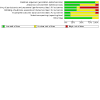


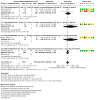
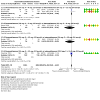
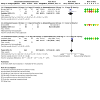
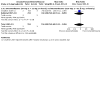
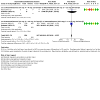
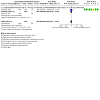

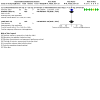

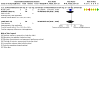

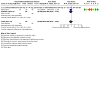

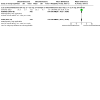

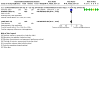

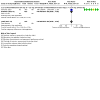

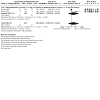
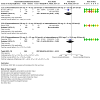




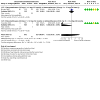
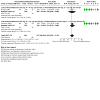

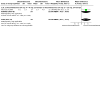

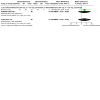
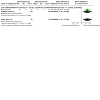

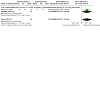
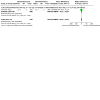


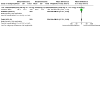
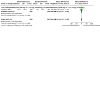
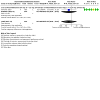
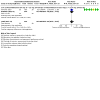
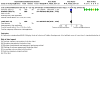
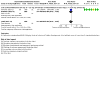
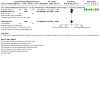
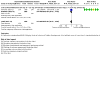
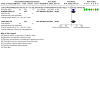


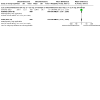
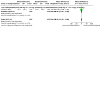
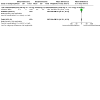
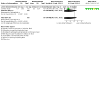


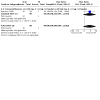
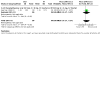
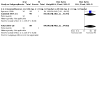
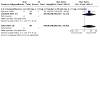

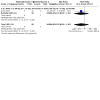
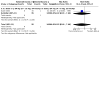




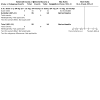
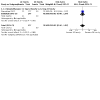
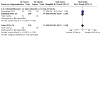





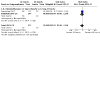
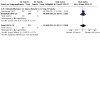




Update of
-
Different corticosteroids and regimens for accelerating fetal lung maturation for women at risk of preterm birth.Cochrane Database Syst Rev. 2013 Aug 29;(8):CD006764. doi: 10.1002/14651858.CD006764.pub3. Cochrane Database Syst Rev. 2013. Update in: Cochrane Database Syst Rev. 2022 Aug 9;8:CD006764. doi: 10.1002/14651858.CD006764.pub4. PMID: 23990333 Updated.
References
References to studies included in this review
Crowther 2019 {published data only}
-
- ACTRN12612000282886. Fetal cardiovascular response to maternal corticosteroid administration: a comparison of dexamethasone versus betamethasone [Fetal cardiovascular response to maternal corticosteroid administration for fetal lung maturity: an observational comparison of dexamethasone versus betamethasone ultrasound and cardiotocograph effects within the A*STEROID randomised controlled trial]. trialsearch.who.int/Trial2.aspx?TrialID=ACTRN12612000282886 (first received 9 March 2012). [CENTRAL: CN-01869021]
-
- Crowther C, Middleton P, Andersen C, Ashwood P, Doyle L, Robinson J, et al. Dexamethasone or betamethasone prior to preterm birth to increase survival free of childhood neurosensory disability: the A*STEROID Trial. Journal of Paediatrics and Child Health 2017;53(Suppl 2):22. [CENTRAL: CN-02082235]
-
- Crowther C. Australasian antenatal study to evaluate the role of intramuscular dexamethasone versus betamethasone prior to preterm birth to increase survival free of childhood neurosensory disability – a randomised controlled trial. trialsearch.who.int/Trial2.aspx?TrialID=ACTRN12608000631303 (first received 5 March 2009).
-
- Crowther CA, Ashwood P, Andersen CC, Middleton PF, Tran T, Doyle LW, et al. Maternal intramuscular dexamethasone versus betamethasone before preterm birth (ASTEROID): a multicentre, double-blind, randomised controlled trial. Lancet Child & Adolescent Health 2019;3(11):769-80. [CENTRAL: CN-01996241] [EMBASE: 2003288219] [PMID: ] - PubMed
-
- Crowther CA, Harding JE, Middleton PF, Andersen CC, Ashwood P, Robinson JS, et al. Australasian randomised trial to evaluate the role of maternal intramuscular dexamethasone versus betamethasone prior to preterm birth to increase survival free of childhood neurosensory disability (A*STEROID): study protocol. BMC Pregnancy and Childbirth 2013;13:104. [CENTRAL: CN-00964043] [PMID: ] - PMC - PubMed
Egerman 1998 {published data only}
-
- Egerman RS, Mercer B, Doss JL, Sibai BM. A randomized controlled trial of oral and intramuscular dexamethasone in the prevention of neonatal respiratory distress syndrome. American Journal of Obstetrics and Gynecology 1998;178(1 Pt 2):S19. - PubMed
-
- Egerman RS, Mercer BM, Doss JL, Sibai BM. A randomised controlled trial of oral and intramuscular dexamethasone in the prevention of neonatal respiratory distress syndrome. American Journal of Obstetrics and Gynecology 1998;179(5):1120-3. - PubMed
-
- Egerman RS, Walker RA, Doss JL, Mercer B, Sibai BM, Andersen RN. A comparison between oral and intramuscular dexamethasone in suppressing unconjugated estriol levels during the third trimester. American Journal of Obstetrics and Gynecology 1998;178(1 Pt 2):S182. - PubMed
-
- Egerman RS, Walker RA, Mercer BM, Doss JL, Sibai BM, Andersen RA. Comparison between oral and intramuscular dexamethasone in suppressing unconjugated estriol levels during the third trimester. American Journal of Obstetrics and Gynecology 1998;179(5):1234-6. - PubMed
Elimian 2007 {published data only}
-
- Elimian A, Garry D, Figueroa R, Spitzer A, Wiencek V, Quirk JG. Antenatal betamethasone compared with dexamethasone (Betacode Trial): a randomized controlled trial. Obstetrics and Gynecology 2007;110(1):26-30. - PubMed
-
- Elimian A, Garry D, Figueroa R, Spitzer AR, Wiencek V, Ogburn P, et al. 'Betacode Trial' antenatal betamethasone compared to dexamethasone: a randomized controlled trial [abstract]. American Journal of Obstetrics and Gynecology 2005;193(6 Suppl):S5. - PubMed
-
- NCT00418353. Antenatal Betamethasone Compared to Dexamethasone – "BETACODE TRIAL". clinicaltrials.gov/show/NCT00418353 (first received 2 January 2007). [CENTRAL: CN-02013509]
Khandelwal 2012 {published data only}
-
- Khandelwal M, Chang E, Hansen C, Hunter K, Milcarek B. Betamethasone dosing interval: 12 or 24 hours apart? A randomized, noninferiority open trial. American Journal of Obstetrics & Gynecology 2012;206(3):201.e1-11. - PubMed
-
- Khandelwal M, Chang E, Hansen C, Hunter K, Milcarek B. Betamethasone dosing interval −12 or 24 hours apart? American Journal of Obstetrics and Gynecology 2012;206(Suppl 1):S10-11. - PubMed
-
- NCT00453141. Betamethasone dosing interval – 12 or 24 hours? clinicaltrials.gov/show/NCT00453141 (first received 28 March 2007). [CENTRAL: CN-01514761]
Magee 1997 {published data only}
-
- Magee LA, Dawes GS, Moulden M, Redman CW. A randomised control comparison of betamethasone with dexamethasone: effects on the antenatal fetal heart rate. British Journal of Obstetrics and Gynaecology 1997;104(11):1233-8. - PubMed
Mulder 1997 {published data only}
-
- Mulder EJ, Derks JB, Visser GH. Antenatal corticosteroid therapy and fetal behaviour: a randomised study of the effects of betamethasone and dexamethasone. British Journal of Obstetrics and Gynaecology 1997;104(11):1239-47. - PubMed
Mushkat 2001 {published data only}
-
- Mushkat Y, Ascher-Landsberg J, Keider R, Carmon E, Pauzner D, David MP. The effects of betamethasone versus dexamethasone on fetal biophysical parameters. European Journal of Obstetrics, Gynecology, and Reproductive Biology 2001;97:50-2. - PubMed
Rotmensch 1999 {published data only}
-
- Rotmensch S, Liberati M, Vishne T, Celentano C, Ben-Rafael Z, Bellati U. The effects of betamethasone versus dexamethasone on computer-analysed fetal heart rate characteristics: a prospective randomized trial. American Journal of Obstetrics and Gynecology 1998;178(1 Pt 2):S185.
-
- Rotmensch S, Liberati M, Vishne TH, Celentano C, Ben-Rafael Z, Bellati U. The effect of betamethasone and dexamethasone on fetal heart rate patterns and biophysical activities. A prospective randomised trial. Acta Obstetricia et Gynecologica Scandinavica 1999;78(6):493-500. - PubMed
Senat 1998 {published data only}
-
- Minoui S, Ville Y, Senat MV, Multon O, Fernandez H, Frydman R. Effect of dexamethasone and betamethasone on fetal heart rate variability in preterm labor: a randomized study. Prenatal and Neonatal Medicine 1996;1(Suppl 1):156. - PubMed
-
- Senat MV, Minoui S, Multon O, Fernandez H, Frydman R, Ville Y. Effects of dexamethasone and betamethasone on fetal heart rate variability in preterm labour a randomised study. British Journal of Obstetrics and Gynaecology 1998;105:749-55. - PubMed
Subtil 2003 {published data only}
-
- Subtil D, Tiberghien P, Devos P, Therby D, Leclerc G, Vaast P, et al. Immediate and delayed effects of antenatal corticosteroids on fetal heart rate: a randomised trial that compares betamethasone acetate and phosphate, betamethasone phosphate, and dexamethasone. American Journal of Obstetrics and Gynecology 2003;188(2):524-31. - PubMed
-
- Subtil D, Tiberghien P, Leclercq G, Therby D, Dufour P, Puech F. Randomized trial comparing three different forms of antenatal corticotherapy on fetal heart rate. European Journal of Obstetrics, Gynecology, and Reproductive Biology 2002;104:179.
Urban 2005 {published data only}
-
- Urban R, Lemancewicz A, Przepiesc J, Urban J, Kretowska M. Antenatal corticosteroid therapy: a comparative study of dexamethasone and betamethasone effects on fetal doppler flow velocity waveforms. European Journal of Obstetrics, Gynecology, and Reproductive Biology 2005;120(2):170-4. - PubMed
References to studies excluded from this review
Egerman 1997 {published data only}
-
- Egerman RS, Pierce WF 4th, Andersen RN, Umstot ES, Carr TL, Sibai BM. A comparison of the bioavailability of oral and intramuscular dexamethasone in women in late pregnancy. Obstetrics and Gynecology 1997;89(2):276-80. - PubMed
IRCT2014090912789N6 {published data only}
-
- IRCT2014090912789N6. Impact of betamethasone on preterm infants outcomes [Comparing the impact of one versus two doses of betamethasone on preterm infants outcomes: a clinical trial study]. trialsearch.who.int/Trial2.aspx?TrialID=IRCT2014090912789N6 (first received 20 October 2014). [CENTRAL: CN-01862384]
Kurz 1993 {published data only}
-
- Kurz C, Arbeiter K, Obermair A, Salzer H, Salzer HR, Lohninger A. L-carnitine-betamethasone combination vs betamethasone for prevention of respiratory distress syndrome. Zeitschrift fur Geburtshilfe und Perinatologie 1993;197:215-9. - PubMed
Liu 2006 {published data only}
-
- Liu J, Wang Q, Zhao JH, Chen YH, Qin GL. The combined antenatal corticosteroids and vitamin K therapy for preventing periventricular-intraventricular hemorrhage in premature newborns less than 35 weeks gestation. Journal of Tropical Pediatrics 2006;52(5):355-9. - PubMed
Romaguera 1997 {published data only}
-
- Romaguera J, Lynch L, Adamson K. The ineffectiveness of dexamethasone to accelerate the progression of L-S ratio. Acta Obstetricia et Gynecologica Scandinavica Supplement 1997;76(167:1):38.
Salzer 1982 {published data only}
-
- Salzer H, Husslein P, Binstorfer E, Wagner G, Simbruner G, Popov CH, et al. First clinical trial of combination of carnitine and dexamethasone for the induction of lung maturity. 8th European Congress of Perinatal Medicine; 1982 Sept 7-10; Brussels, Belgium.
Shanks 2010 {published data only}
Sukarna 2021 {published data only}
-
- ISRCTN16613220. Is there a difference between 2 doses of 12 mg of dexamethasone given 12 hours apart compared with 4 doses of 6 mg dexamethasone given 12 hours apart in terms of the dosing regimen's impact on causing high blood sugar in the mother when dexamethasone is given to minimise risk of prematurity complications? [Antenatal dexamethasone regimen in mild gestational diabetes: a randomized controlled trial]. trialsearch.who.int/Trial2.aspx?TrialID=ISRCTN16613220 (first received 13 February 2018). [CENTRAL: CN-01895411]
Vytiska‐Binstorfer 1985 {published data only}
-
- Vytiska-Binstorfer E, Salzer H, Langer M, Lohninger A, Simbruner G. Clinical randomised trial: stimulation of fetal surfactant production by carnitine combined with a reduced betamethasone dose. Archives of Gynaecology 1985;237(Suppl 1):399.
Whitt 1976 {published data only}
-
- Whitt GG, Buster JE, Killam AP, Scragg WH. A comparison of two glucocorticoid regimens for acceleration of fetal lung maturation in premature labour. American Journal of Obstetrics and Gynecology 1976;124:479-82. - PubMed
References to studies awaiting assessment
Chen 2005 (TST) {published data only}
-
- Chen CY, Wang KG, Chang TY, Chen CP, Loo JH. Effects of antenatal betamethasone and dexamethasone in preterm neonates. Taiwanese Journal of Obstetrics and Gynaecology 2005;44(3):247-51.
Chhatrala 2015 {published data only}
-
- Chhatrala JJ, Chawada R. Comparative study of dexamethasone and betamethasone for women at risk of preterm birth. International Journal of Reproduction, Contraception, Obstetrics and Gynecology 2015;4(4):1000-3.
Danesh 2012 (TST) {published data only}
Gupta 2019 (TST) {published data only}
-
- Gupta P, Sharma S, Kumar V. A randomised controlled trial of 12 hours vs 24 hours betamethasone dosing interval in preterm premature rupture of membranes for prevention of respiratory distress syndrome (RDS) in neonates. Journal of Medical Science and Clinical Research 2019;7(8):669-74. [CENTRAL: CN-02218250]
Kashanian 2018 (TST) {published data only}
-
- IRCT201402072624N11. Betamethasone administration in preterm labor [A comparison between the effect of the two methods of 12 versus 24 hours interval of betamethasone administration on neonatal respiratory distress syndrome in women with preterm labor distress syndrome]. trialsearch.who.int/Trial2.aspx?TrialID=IRCT201402072624N11 (first received 25 March 2014). [CENTRAL: CN-01880680]
-
- Kashanian M, Eshraghi N, Sheikhansari N, Bordbar A, Khatami E. Comparison between two doses of betamethasone administration with 12 hours vs. 24 hours intervals on prevention of respiratory distress syndrome: a randomised trial. Journal of Obstetrics and Gynaecology 2018;38(6):770-6. [CENTRAL: CN-01665275] [EMBASE: 621208178] [PMID: ] - PubMed
Rasool 2017 (TST) {published data only}
-
- Rasool A, Farooq U, Nazir QU, Durani HB. Efficacy of two regimens of dexamethasone for Management of preterm labour: pilot study. Journal of Ayub Medical College, Abbottabad 2017;29(3):393-7. [CENTRAL: CN-01914063] [PMID: ] - PubMed
Romejko‐Wolniewicz 2013 {published data only}
-
- Romejko-Wolniewicz E, Oleszczuk L, Zaręba-Szczudlik J, Czajkowski K. Dosage regimen of antenatal steroids prior to preterm delivery and effects on maternal and neonatal outcomes. Journal of Maternal-Fetal and Neonatal Medicine 2013;26(3):237-41. - PubMed
Tehrani 2014 (TST) {published data only}
-
- IRCT201212307513N2. A comparison between betamethasone and dexamethasone on biophysical profile in 28wk – 32wk pregnant women at risk of preterm labor [A comparison between betamethasone and dexamethasone on biophysical profile]. trialsearch.who.int/Trial2.aspx?TrialID=IRCT201212307513N2 (first received 27 December 2013). [CENTRAL: CN-01805875]
Yahya 2021 (TST) {published data only}
-
- NCT03446937. Effect of antenatal corticosteroids on neonatal morbidity. clinicaltrials.gov/show/NCT03446937 (27 February 2018). [CENTRAL: CN-01483469]
-
- Yahya A, Sulayman H, Abdulkadir I, Biliaminu B. Effect of antenatal corticosteroids in late preterm delivery: a randomised controlled trial. BJOG: an International Journal of Obstetrics and Gynaecology 2021;128(Suppl 2):104-5. [CENTRAL: CN-02284999] [EMBASE: 635301573]
References to ongoing studies
IRCT2015120415634N2 {published data only}
-
- IRCT2015120415634N2. The effect of antenatal intramuscular administration of two doses of betamethasone every 12 hours on acute pulmonary complications in preterm infants born [Comparing of antenatal intramuscular administration of two doses of betamethasone every 12 hours with standard method every 24 hours on acute neonatal pulmonary complications in preterm infants born from women with preterm premature of membrane]. trialsearch.who.int/Trial2.aspx?TrialID=IRCT2015120415634N2 (first received 27 September 2017). [CENTRAL: CN-01886227]
NCT01697098 {published data only}
-
- NCT01697098. Dexamethasone for preterm labour [Dexamethasone dosing interval: 12 or 24 hours apart? A randomized, clinical trial]. clinicaltrials.gov/show/NCT01697098 (first received 2 October 2012). [CENTRAL: CN-01537911]
NCT04494529 {published data only}
-
- NCT04494529. Single dose antenatal corticosteroids (SNACS) for women at risk of preterm birth [Single dose antenatal corticosteroids (SNACS) pilot randomized control trial for women at risk of preterm birth]. clinicaltrials.gov/show/NCT04494529 (first received 31 July 2020). [CENTRAL: CN-02145746]
NCT05114096 {published data only}
-
- NCT05114096. Single dose of antenatal corticosteroids for pregnancies at risk of preterm delivery (SNACS). clinicaltrials.gov/show/NCT05114096 (first received 9 November 2021). [CENTRAL: CN-02339354]
Schmitz 2019 {published data only}
-
- EUCTR2016-001486-90-FR. BETADOSE: dose reduction of antenatal betamethasone given to prevent the neonatal complications associated with very preterm birth: a randomized, multicenter, double blind placebo-controlled non inferiority trial [Dose reduction of antenatal betamethasone given to prevent the neonatal complications associated with very preterm birth: a randomized, multicentre, double blind placebo-controlled non inferiority trial. BETADOSE – BETADOSE]. trialsearch.who.int/Trial2.aspx?TrialID=EUCTR2016-001486-90-FR (first received 27 April 2016). [CENTRAL: CN-02169007]
-
- NCT02897076. Dose reduction of antenatal betamethasone given to prevent the neonatal complications associated with very preterm birth [Dose reduction of antenatal betamethasone given to prevent the neonatal complications associated with very preterm birth: a randomized, multicentre, double blind placebo-controlled non inferiority trial]. clinicaltrials.gov/show/NCT02897076 (first received 7 September 2016). [CENTRAL: CN-01520740]
-
- Schmitz T, Alberti C, Ursino M, Baud O, Aupiais C, BETADOSE study group and the GROG (Groupe de Recherche en Gynecologie Obstetrique). Full versus half dose of antenatal betamethasone to prevent severe neonatal respiratory distress syndrome associated with preterm birth: study protocol for a randomised, multicenter, double blind, placebo-controlled, non-inferiority trial (BETADOSE). BMC Pregnancy and Childbirth 2019;19(1):67. [CENTRAL: CN-01787973] [EMBASE: 626359019] [PMID: ] - PMC - PubMed
-
- Schmitz T, Doret M, Sentilhes L, Alberti C, Ursino M, Aupiais C, et al. Dose reduction of antenatal betamethasone in women at risk of very preterm delivery (BETADOSE trial). American Journal of Obstetrics and Gynecology 2021;224(2 Suppl):S723-4. [CENTRAL: CN-02247756] [EMBASE: 2010870067]
TCTR20200729002 {published data only}
-
- TCTR20200729002. Effect of different doses of steroid on respiratory distress syndrome in moderate to late preterm neonates born between 320-366 weeks of gestation: a randomized controlled trial. trialsearch.who.int/Trial2.aspx?TrialID=TCTR20200729002 (first received 29 July 2020). [CENTRAL: CN-02189966]
WHO ACTION III {published data only}
-
- CTRI/2021/03/032429. Improving newborn survival in preterm birth [WHO ACTION-III: a multi-country, multi-centre, three-arm, parallel group, double-blind, placebo-controlled, randomized trial of two doses of antenatal corticosteroids for women with a high probability of birth in the late preterm period in hospitals in low-resource countries to improve newborn outcomes – WHO ACTION-III]. trialsearch.who.int/Trial2.aspx?TrialID=CTRI/2021/03/032429 (first received 24 November 2021). [CENTRAL: CN-02280513]
-
- ISRCTN11434567. Antenatal corticosteroids for women at risk of birth in the late preterm period to improve newborn outcomes [ACTION III: a multi-country, multi-centre, three-arm, parallel group, double-blind, placebo-controlled, randomized trial of two doses of antenatal corticosteroids for women with a high probability of birth in the late preterm period in hospitals in low-resource countries to improve newborn outcomes]. trialsearch.who.int/Trial2.aspx?TrialID=ISRCTN11434567 (first received 7 June 2021). [CENTRAL: CN-02280191]
-
- PACTR202105463874444. The WHO ACTION (Antenatal CorticosTeroids for Improving Outcomes in Preterm Newborns) Trials [ACTION III: a multi-country, multi-centre, three-arm, parallel group, double-blind, placebo-controlled, randomized trial of two doses of antenatal corticosteroids for women with a high probability of birth in the late preterm period in hospitals in low-resource countries to improve newborn outcomes]. trialsearch.who.int/Trial2.aspx?TrialID=PACTR202105463874444 (first received 18 May 2021). [CENTRAL: CN-02281089]
Additional references
AMH 2006
-
- Anonymous. Corticosteroids. In: Rossi S, editors(s). Australian Medicines Handbook. Adelaide (Australia): AMH, 2006:496-500.
Ballard 1995
-
- Ballard PL, Ballard RA. Scientific basis and therapeutic regimens for use of antenatal glucocorticoids. American Journal of Obstetrics and Gynecology 1995;173:254-62. - PubMed
Bar‐Lev 2004
-
- Bar-Lev MR, Maayan-Metzger A, Matok I, Heyman Z, Sivan E, Kuint J. Short term outcomes in low birth weight infants following antenatal exposure to betamethasone versus dexamethasone. Obstetrics and Gynecology 2004;104(3):484-8. - PubMed
Baud 1999
-
- Baud O, Foix-L'Helias L, Kaminski M, Audibert F, Jarreau PH, Papiernik E, et al. Antenatal glucocorticoid treatment and cystic periventricular leukomalacia in very premature infants. New England Journal of Medicine 1999;341:1190-6. - PubMed
Carlisle 2017
-
- Carlisle JB. Data fabrication and other reasons for non-random sampling in 5087 randomised, controlled trial in anaesthetic and general medical journals. Anaesthesia 2017;72:944-52. - PubMed
Chawanpaiboon 2019
Chow 2013
-
- Chow SS. Report of the Australian and New Zealand Neonatal Network 2010. Sydney (Australia): Australian and New Zealand Neonatal Network, 2013.
Ciapponi 2021
Crowther 2015
Dalziel 2005
Doyle 2001
-
- Doyle LW, Victorian Infant Collaborative Study Group. Outcome at 5 years of age of children 23 to 27 weeks gestation: refining the prognosis. Pediatrics 2001;108(1):134-41. - PubMed
FIGO 2021
Goldenberg 2001
-
- Goldenberg RL, Wright LL. Repeated courses of antenatal corticosteroids. Obstetrics and Gynecology 2001;97:316-7. - PubMed
Goldenberg 2007
GRADEpro GDT [Computer program]
-
- GRADEpro GDT. Version accessed 7 February 2022. Hamilton (ON): McMaster University (developed by Evidence Prime). Available at gradepro.org.
Haram 2003
-
- Haram K, Mortensen JH, Wollen AL. Preterm delivery: an overview. Acta Obstetricia et Gynecologica Scandinavica 2003;82:687-704. - PubMed
Henderson‐Smart 2007
Higgins 2011
-
- Higgins JP, Green S, editor(s). Cochrane Handbook for Systematic Reviews of Interventions Version 5.1.0 (updated March 2011). The Cochrane Collaboration, 2011. Available from training.cochrane.org/handbook/archive/v5.1/.
Imseis 1996
-
- Imseis HM, Iams JD. Glucocorticoid use in patients with preterm premature rupture of fetal membranes. Seminars in Perinatology 1996;20(5):439-50. - PubMed
Jobe 2004
-
- Jobe AH, Soll RF. Choice and dose of corticosteroid for antenatal treatments. American Journal of Obstetrics and Gynecology 2004;190:878-81. - PubMed
Jobe 2021
Johnson 1993
Katzung 2004
-
- Katzung BG. Basic and Clinical Pharmacology. New York (NY): McGraw Hill, 2004.
Lee 2006
-
- Lee BH, Stoll BJ, McDonald SA, Higgins RD, for the National Institute of Child Health and Human Development Neonatal Research Network. Adverse neonatal outcomes associated with antenatal dexamethasone versus antenatal betamethasone. Pediatrics 2006;117(5):1503-10. - PubMed
Lefebvre 1976
-
- Lefebvre Y, Marier R, Amyot G, Bilodeau R, Hotte R, Raynault P, et al. Maternal, fetal and intra-amniotic hormonal and biologic changes resulting from a single dose of hydrocortisone injected in the intra-amniotic compartment. American Journal of Obstetrics and Gynecology 1976;125(5):609-12. - PubMed
Liggins 1969
-
- Liggins GC. Premature delivery of foetal lambs infused with corticosteroids. Journal of Endocrinology 1969;45:515-23. - PubMed
Liggins 1976
-
- Liggins GC. Prenatal glucocorticoid treatment: prevention of respiratory distress syndrome. In: Moore TD , editors(s). Lung maturation and the prevention of hyaline membrane disease. Report of the Seventieth Ross Conference on Paediatric Research; 1976; Columbus (OH). 1976:97-103.
McGoldrick 2020
Moise 1995
-
- Moise AA, Wearden ME, Kozinetz CA, Gest AL, Welty SE, Hansen TN. Antenatal steroids are associated with less need for blood pressure support in extremely premature infants. Pediatrics 1995;95:845-50. - PubMed
Murphy 1982
-
- Murphy BE. The absorption by the human fetus of intra-amniotically injected cortisol. Journal of Steroid Biochemistry 1982;16(3):415-7. - PubMed
Mwaniki 2012
NIH 1995
-
- National Institutes of Health. Effect of corticosteroids for fetal maturation on perinatal outcomes. NIH Consensus Development panel on the effect of corticosteroids for fetal maturation on perinatal outcomes. JAMA 1995;273(5):413-8. - PubMed
NIH 2000
-
- NIH Consensus Panel. Antenatal corticosteroids revisited. NIH Consensus Statement 2000;17(2):1-10. - PubMed
NNF6 2011
-
- Hey E, editor. The Neonatal Formulary: Drug Use in Pregnancy and the First Year of Life 6th Edition (NNF6). Oxford (UK): BMJ Books/Wiley Blackwell, 2011.
Patel 2016
Petersen 1983
-
- Petersen MC, Collier CB, Ashley JJ, McBride WG, Nation RL. Disposition of betamethasone in parturient women after intravenous administration. European Journal of Clinical Pharmacology 1983;25(6):803-10. - PubMed
Review Manager 2020 [Computer program]
-
- Review Manager (RevMan). Version 5.4. Copenhagen: The Nordic Cochrane Centre, The Cochrane Collaboration, 2020.
Saengwaree 2005
-
- Saengwaree P, Liabsuetrakul T. Changing practice on corticosteroids. Journal of the Medical Association of Thailand 2005;88:307-13. - PubMed
Saigal 2007
-
- Saigal S, Doyle LW. An overview of mortality and sequelae of preterm birth from infancy to adulthood. Lancet 2007;371(9608):261-9. - PubMed
Schmidt 2019
Schünemann 2013
-
- Schünemann H, Brożek J, Guyatt G, Oxman A, editor(s). Handbook for grading the quality of evidence and the strength of recommendations using the GRADE approach (updated October 2013). GRADE Working Group, 2013. Available from gdt.guidelinedevelopment.org/app/handbook/handbook.html.
Walfisch 2001
-
- Walfisch A, Hallak M, Mazor M. Multiple courses of antenatal steroids: risks and benefits. Obstetrics and Gynecology 2001;98:491-7. - PubMed
References to other published versions of this review
Brownfoot 2008
Brownfoot 2013
-
- Brownfoot FC, Gagliardi DI, Bain E, Middleton P, Crowther CA. Different corticosteroids and regimens for accelerating fetal lung maturation for women at risk of preterm birth. Cochrane Database of Systematic Reviews 2013, Issue 8. Art. No: CD006764. [DOI: 10.1002/14651858.CD006764.pub3] - DOI - PubMed
Publication types
MeSH terms
Substances
LinkOut - more resources
Full Text Sources

